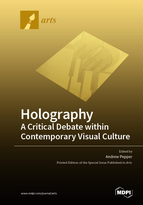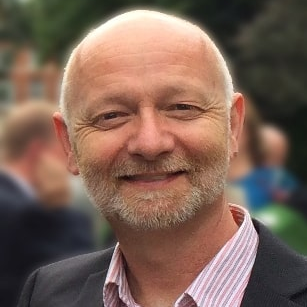Holography—A Critical Debate within Contemporary Visual Culture
A special issue of Arts (ISSN 2076-0752). This special issue belongs to the section "Visual Arts".
Deadline for manuscript submissions: closed (19 July 2019) | Viewed by 28631
Special Issue Editor
Interests: the position of holography within contemporary visual culture; historical perspectives within holography; spatial drawing and mark-making; projected light, installation and time-based media; the peripheral view; the unsupported mark; luminous indicators; ephemeral documents; 3-D imaging; constructed worlds and research informed teaching
Special Issue Information
Dear Colleagues,
In her seminal PhD thesis, submitted to the Royal College of Art, London, in 1994, Margaret Benyon, MBE, postulated the question “How is holography Art?”. Within her 226 pages, she attempted to put pressure on the ‘How’ not the ‘Why’ or the ‘If’, using the lens of her own, considerable, research in the field.
The broad issues surrounding this area of critical debate have not been extensively or continuously explored, either from within the field of practising artists investigating holography as a process, medium and methodology or through broader discursive platforms within the visual arts. The medium remains, for most, a curious optical innovation that lacks critical consideration.
Perhaps, almost 25 years later, Benyon’s question is somewhat redundant, or too blunt an instrument to accurately pressurise the extensive research which has taken place over this period. Artists have actively extended the vocabulary of holographic imaging, not only through disrupting the technology, which makes it practical, but also through an attempt to investigate its visual, conceptual and practical vocabularies.
Contributions are invited which explore, critically, the use and development of holography within the visual arts and culture from the perspectives of practitioners, critics, curators, observers, collectors, insiders and outsiders.
Texts investigating: individual practice and the development of an extended creative vocabulary; own works or installations which test critical concerns; speculative research which places pressure on traditional views of the medium and its supportive technologies; curatorial observations spanning historical and contemporary collections or exhibitions; contextualisation of an individual’s creative practice; analysis of research methodologies within the field and the impact of holography across the visual/cultural landscape, are invited. Papers which focus specifically on technical processes (unless they are a significant contributor to critical debate) should be submitted to more technical forums.
In 70 years holography has moved from an optical concept, through analogue technologies, which promised a new way of viewing and manipulating our visual and conceptual world, to digital production which now sits alongside data-driven virtual worlds constructed by digital natives (those who never knew a world without the internet). It is time for a considered, critical, assessment.
Dr. Andrew PepperGuest Editor
Manuscript Submission Information
Manuscripts should be submitted online at www.mdpi.com by registering and logging in to this website. Once you are registered, click here to go to the submission form. Manuscripts can be submitted until the deadline. All submissions that pass pre-check are peer-reviewed. Accepted papers will be published continuously in the journal (as soon as accepted) and will be listed together on the special issue website. Research articles, review articles as well as short communications are invited. For planned papers, a title and short abstract (about 100 words) can be sent to the Editorial Office for announcement on this website.
Submitted manuscripts should not have been published previously, nor be under consideration for publication elsewhere (except conference proceedings papers). All manuscripts are thoroughly refereed through a double-blind peer-review process. A guide for authors and other relevant information for submission of manuscripts is available on the Instructions for Authors page. Arts is an international peer-reviewed open access semimonthly journal published by MDPI.
Please visit the Instructions for Authors page before submitting a manuscript. The Article Processing Charge (APC) for publication in this open access journal is 1400 CHF (Swiss Francs). Submitted papers should be well formatted and use good English. Authors may use MDPI's English editing service prior to publication or during author revisions.
Keywords
- holography
- holograms
- perception
- illusion
- 3-D
- three-dimensions
- installation
- spatial drawing
- spatial manipulation
- mark-making
- luminous imaging
- ephemeral documents
- volumetric recording
- distorting the facsimile





